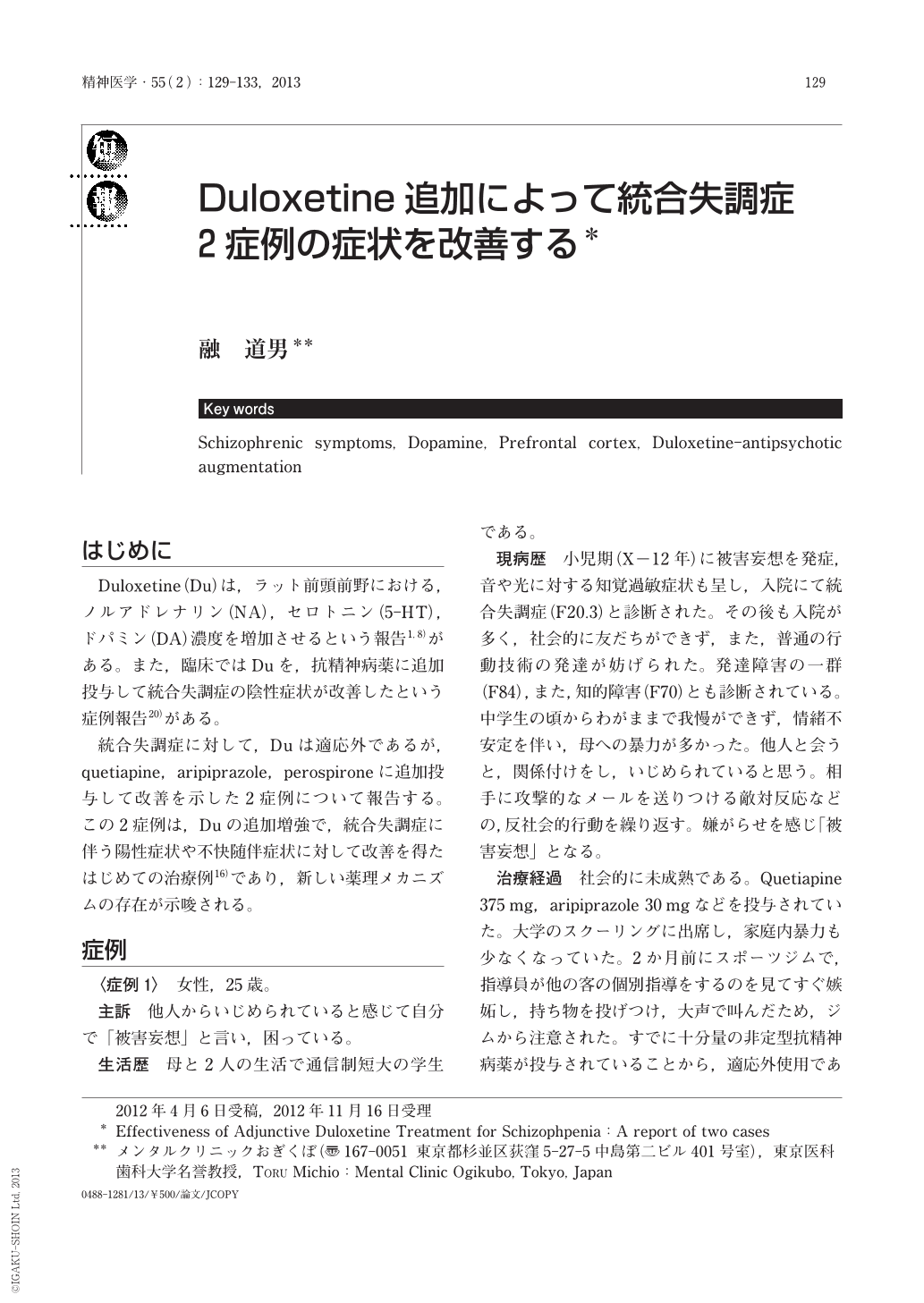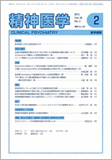Japanese
English
- 有料閲覧
- Abstract 文献概要
- 1ページ目 Look Inside
- 参考文献 Reference
はじめに
Duloxetine(Du)は,ラット前頭前野における,ノルアドレナリン(NA),セロトニン(5-HT),ドパミン(DA)濃度を増加させるという報告1,8)がある。また,臨床ではDuを,抗精神病薬に追加投与して統合失調症の陰性症状が改善したという症例報告20)がある。
統合失調症に対して,Duは適応外であるが,quetiapine,aripiprazole,perospironeに追加投与して改善を示した2症例について報告する。この2症例は,Duの追加増強で,統合失調症に伴う陽性症状や不快随伴症状に対して改善を得たはじめての治療例16)であり,新しい薬理メカニズムの存在が示唆される。
Psychotic symptoms of two patients with schizophrenia responded well to adjunctive duloxetine(20~40mg/day)treatment in conjunction with primary atypical antipsychotic treatments.
Case 1. A 25-year-old woman who was studying at a correspondence junior college. Chief complaint. The patient often felt persecuted by others, so she complained of "delusion of persecution." History of illness. The patient was diagnosed with schizophrenia at the age of 13(F20.3)and was repeatedly hospitalized;her social, communicational, and behavioral development was limited. She was also diagnosed with a type of childhood autism(F84). She showed selfish and unpleasant behavior since her junior high school days. She often had hostile relations with those close to her and repeatedly conducted antisocial acts. Course of treatment. Her mother consulted my mental clinic office, and 20mg/d duloxetine was adjunctively prescribed, with 375mg/d quetiapine and 30mg/d aripiprazole. Within a few days, her symptoms disappeared;she could sleep soundly, and her delusions stopped. She became comfortable with doing mental activities. After the dose of duloxetine was increased to 40mg/d, she became more clear-headed, calmer, and was able to do her homework. Her better state continued until she finished her college credits, and she graduated from college 2.5 years ago.
Case 2. A 35-year-old female who lived with her parents. Chief complaint. Cenestopathy in the head. History of illness. When the patient was 19, she failed the university examination and reacted very aggressively;she broke the windowpanes at home. At 26, she was diagnosed with schizophrenia(F20.0)in a mental clinic and was treated. When she was partly remitted, she took up a part-time job. At 32, she suddenly discontinued visiting the clinic and taking drugs. Then, she started to experience auditory hallucinations, speak in monologues, and behave bizarrely and rudely. She abruptly broke objects of public property, and therefore, was admitted in an involuntary hospital. She was discharged from the hospital after 1.5 months and was prescribed atypical antipsychotics and hypnotics. She restarted her work. However, she complained of "an unpleasant feeling in the head" and felt a sharp pain in the occipital head and eyes. Her head was covered with a cap or frame. Course of treatment. Considering that the patient had fluffy head discomfort, she was prescribed adjunctive duloxetine(20mg/dl)in conjunction with perospirone(8mg/dl), aripiprazole(15mg/dl), and hypnotics. After two weeks, the cap or frame covering her head was taken off, her fluffy head discomfort and pain ameliorated, and her eyes moved vividly. Then, the duloxetine dose was increased to 30mg/d, and she continued to work and live comfortably.
The neuropharmacologic mechanisms underlying the duloxetine-antipsychotic synergism observed in these two patients with schizophrenia may involve enhancement of dopamine release in the prefrontal cortex.

Copyright © 2013, Igaku-Shoin Ltd. All rights reserved.


